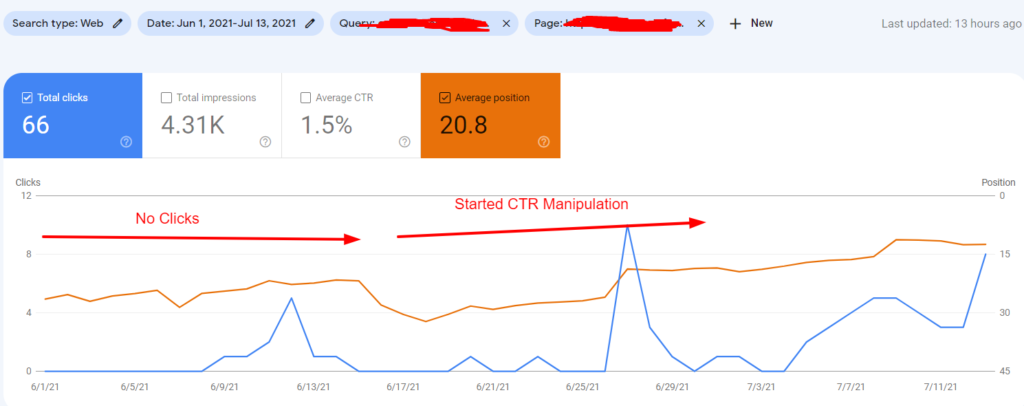CTR Control: A Video Game Changer for Digital Campaigns
The increase of CTR control has actually without a doubt transformed digital advertising and marketing methods, offering online marketers with tools to enhance interaction and drive web traffic effectively. Strategies such as A/B testing and individualized material have actually confirmed to yield substantial renovations in click-through rates. Nonetheless, as brands progressively take advantage of these approaches, the honest implications of such methods require analysis. Balancing the pursuit of maximized metrics with the requirement for genuine audience connections poses a vital obstacle for online marketers today. What ramifications might this stabilizing act hold for the future of digital projects?
Recognizing CTR Manipulation
Although click-through rate (CTR) manipulation might feel like a simple method in electronic advertising and marketing, it encompasses a series of approaches aimed at unnaturally blowing up interaction metrics. This manipulation can take different types, including the use of click ranches, bots, or misleading ad placements that misinform customers into clicking. These methods can compromise the integrity of efficiency data, making it testing for online marketers to gauge the genuine effectiveness of their projects.
Furthermore, CTR adjustment raises honest issues, as it threatens the transparency of digital advertising. The dependence on filled with air metrics can result in misguided advertising choices, skewing source allocation and project methods. Organizations may invest greatly in channels and tactics that appear successful but do not generate actual engagement or conversions.

Benefits of Click-Through Price Optimization
Optimizing click-through price (CTR) is essential for improving the performance of electronic marketing projects. A greater CTR shows that a bigger percentage of customers are involving with the material, which can result in raised web site web traffic and much better conversion prices. By enhancing CTR, brand names can efficiently allocate their advertising sources to initiatives that generate the greatest returns.
Among the primary benefits of CTR optimization is the capacity for improved advertisement placement and reduced prices - CTR Manipulation. Platforms like Google Advertisements reward greater CTRs with better ad positioning and decreased cost-per-click (CPC), allowing marketers to stretch their budget plans even more. In addition, a well-optimized CTR can improve brand visibility, as greater engagement prices typically associate with boosted organic reach

Strategies for Efficient CTR Manipulation
To efficiently control click-through rates (CTR), online marketers can utilize a range of calculated strategies that improve customer engagement and drive traffic. One basic approach is maximizing ad copy to develop compelling and action-oriented language. CTR Manipulation. Utilizing solid call-to-action (CTA) expressions encourages individuals to take immediate activity, enhancing the probability of clicks
Another reliable technique is A/B screening, which permits marketers to compare different advertisement variants. By systematically evaluating performance metrics, they can determine which components resonate ideal with the target audience, therefore refining their techniques for optimal influence. Additionally, leveraging aesthetically enticing graphics and succinct messaging can capture interest quickly, making it more likely that individuals will engage.

Finally, enhancing landing web pages to make sure a smooth customer experience can minimize bounce rates and motivate additional interaction, inevitably cultivating higher CTR. By integrating these techniques, marketing experts can properly control CTR to accomplish their project purposes.
Gauging Success in Digital Projects
Measuring success in electronic campaigns calls for a clear understanding of vital efficiency indications (KPIs) that straighten with campaign goals. KPIs act as measurable metrics that aid analyze the performance of numerous techniques used throughout the project. Typical KPIs include click-through rates (CTR), conversion rates, price per procurement (CPA), and roi (ROI)
To properly gauge success, it is crucial to establish details, quantifiable goals initially of the campaign. For instance, if the primary purpose is to enhance brand awareness, metrics such as impacts and engagement rates might be prioritized. In comparison, projects concentrated on direct sales would take advantage of visit this site an extra detailed evaluation of conversion rates and profits created.
Regular analysis of these KPIs makes it possible for marketing professionals to make data-driven decisions, optimizing their techniques in real-time. Using logical tools can assist in monitoring efficiency and identifying fads, permitting for swift modifications to improve campaign end results. official statement Inevitably, an extensive approach to determining success not just highlights locations for enhancement however also enhances the overall effectiveness of electronic advertising efforts, driving continual growth and involvement in the long-term.
Future Fads in Digital Advertising And Marketing
Anticipating the future of digital marketing discloses a landscape formed by quick technical advancements and changing customer actions. As expert system and machine understanding remain to develop, marketing professionals will increasingly leverage these modern technologies to customize projects at an unmatched range. Anticipating analytics will certainly enable brand names to prepare for client requirements, optimizing ad placements and material shipment in real time.
In addition, the rise of voice search and wise devices is transforming exactly how customers interact with electronic web content. Online marketers will need to adjust their techniques to make sure presence throughout several platforms, including voice-activated assistants. This shift necessitates an emphasis on conversational advertising and marketing, stressing involvement through dialogue instead than typical advertising strategies.
In addition, personal privacy worries are motivating changes in data collection methods. Openness and ethical data usage will certainly come to be extremely important, driving brands to promote count on and commitment amongst customers. The recurring advancement of social media sites platforms will certainly likewise influence marketing methods, with an increased emphasis on authenticity and user-generated content.
Final Thought
In recap, CTR control represents a substantial innovation in digital advertising techniques, providing instant benefits via improved involvement metrics. The continuous advancement of digital marketing will certainly depend on this fragile interaction, forming the future landscape of brand-consumer communications.